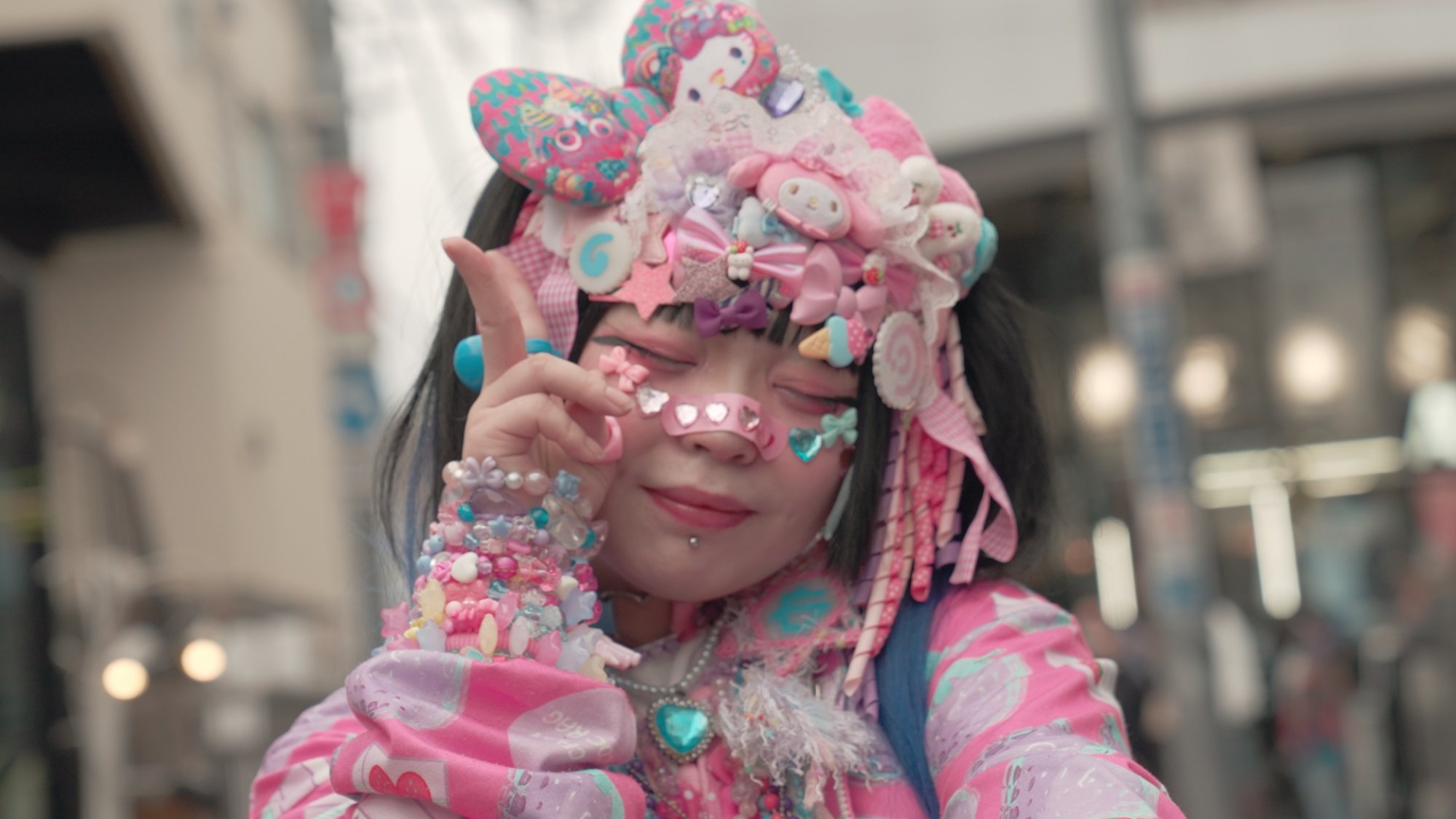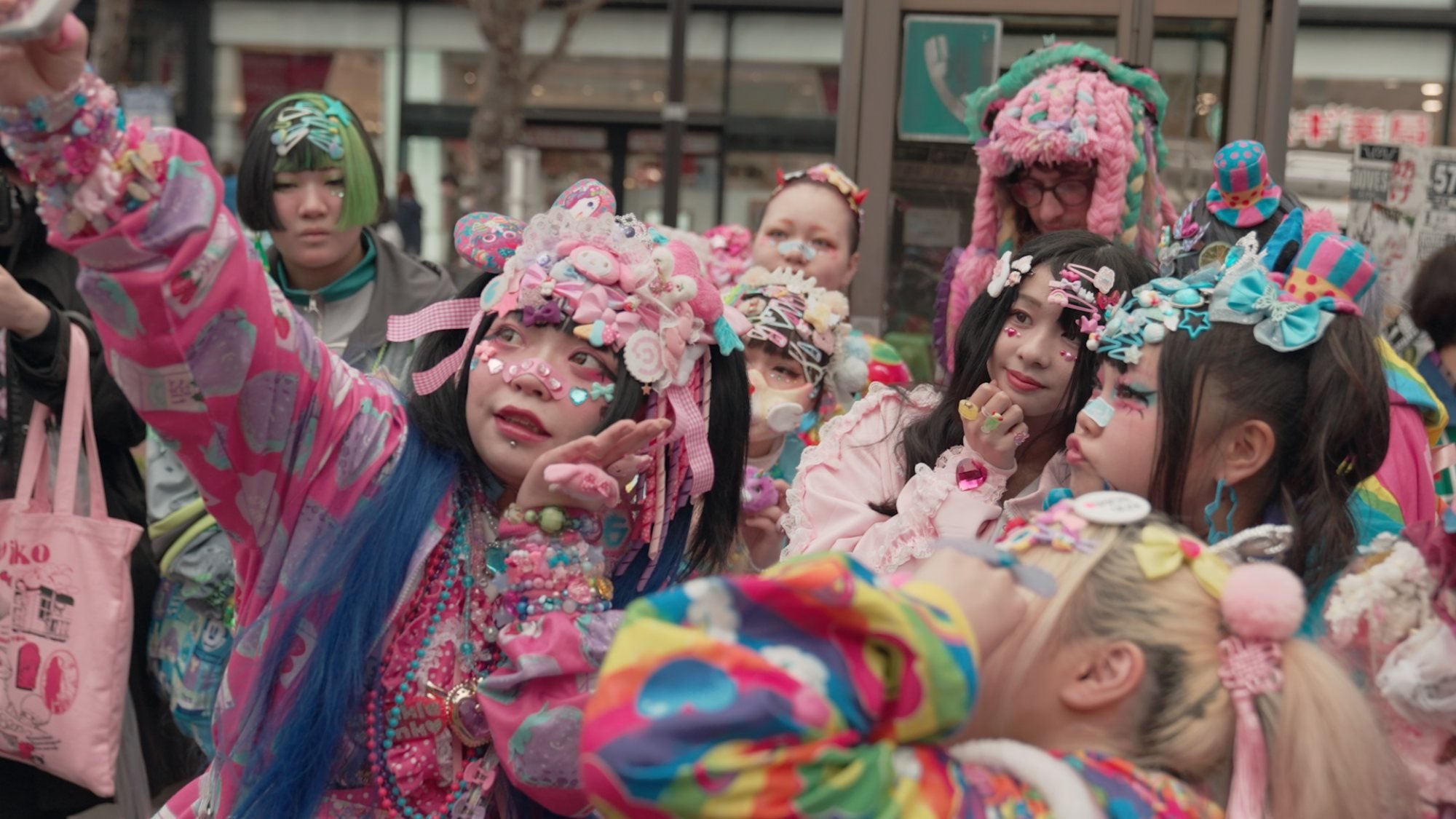“Decora fashion … I think that is very much what people think of if I say ‘Harajuku fashion’,” says Jana Katzenberg, a researcher in the Japanology department at the University of Cologne, Germany. “It was very colourful, lots and lots of layers, lots and lots and lots of accessories and everything just done up to the max.”
Stars of the 1990s such as Tomoe Shinohara were an early inspiration for the style, and her frequent television appearances helped propel the subculture’s over-the-top look to wider fame.
Later, pop stars such as Kyary Pamyu Pamyu brought the style to even larger audiences, while fashion labels like 6% Doki Doki and Super Lovers offered new takes on decora’s kawaii aesthetics.
It was fashion that, at least internationally, came to embody the spirit of Harajuku. Decora was creative, flashy and imbued with a DIY sensibility that the era was known for.

Shoichi Aoki, the founder of Fruits magazine, which documented the heyday of Harajuku’s creative fashion scene, called decora “an original Japanese fashion that couldn’t be found anywhere else”.
Despite decora’s star status, the style had all but disappeared from the streets of Harajuku by the end of the 2010s. The style, like many other subcultures that once defined this Tokyo district in the popular imagination, had fallen out of fashion.
Harajuku, it seemed, was fast becoming old news. “There are fewer and fewer unique stores,” Aoki says. “There’s nothing new emerging. It’s a sad state of affairs, isn’t it?”
In 2017, Aoki published the final issue of Fruits, remarking that all the cool kids were gone.

“The problem with fast fashion was that it sold creativity for cheap,” Aoki says. “It was basically fashion by people who were not afraid to copy trends and designs.
“From the point of view of a brand that took creativity seriously, fast fashion was a destructive act.”
Meanwhile, a new generation of fashionable youth were rediscovering Harajuku style through scanned images from the pages of influential fashion magazines like Fruits and Kera that were posted online.
I gradually began to research these snapshots and I learned about various Harajuku cultures … they were all different and fascinating
Soon, this revival blossomed into a wider community on social media and at real-life meet-ups like Nico’s Neo-Decora Kai.
Nico herself stumbled upon decora while watching make-up tutorials on YouTube. She was soon obsessed, spending her time online diving deep into the history of fashions that first graced the streets of Tokyo a decade before she was born.
“I watched the video and saw the colourful hair, the colourful decorations, the colourful make-up, I was a little bit surprised to learn about this culture,” she says.
“I gradually began to research these snapshots and I learned about various Harajuku cultures … Lolita, yamikawa, gothic, decora … they were all different and fascinating.”
Nico soon pulled together her first decora look – a pink and blue shirt, a colourful skirt, tights and black shoes – and made the trip from Saitama prefecture, a suburb of Tokyo, to Harajuku to show off her best outfit at the time.

But when she stepped out of Harajuku station she found a neighbourhood that had changed. Shops like 6% Doki Doki were still around, but the endless parade of young and fashionable youth that once crowded the streets of Harajuku on Sundays were gone.
“I was so scared,” Nico says. “I was the only one dressed in Harajuku fashion. If you are alone, people look at you with curiosity. They treated me like I was a clown, even though I was just doing what I liked. It’s not true, I thought.”
She realised that the decora community that was spreading online needed a place to grow and gather in the real world.
“At first, I had no friends,” she said. “I wanted a chance to meet friends and to use this fashion as an opportunity to meet them. Gradually, the group grew into Neo-Decora Kai and it drew in young people who felt the same way.”

The event has become a regular meet-up for a new generation of decora fashion icons. Nico does regular interviews with other fashion influencers on YouTube and she continues to network with a growing international scene forming around the colourful and creative style.
“Japanese subcultures not only have this longevity to them, but also they resurge over time,” said Therèsa Winge, who researches fashion and subcultures at Michigan State University in the US. “That isn’t usually what happens with subcultures.
“It’s a really fascinating phenomenon when you find a subculture that can sustain itself or come back.”
Decora’s resurgence even surprised Aoki, who spent decades documenting the style’s evolution with his magazine Fruits.
“I knew the magazines would have an impact, but we haven’t published any issues recently,” Aoki says. “It’s strange to see it get more and more popular these days.”

Aoki is now selling back issues and English translations of the Fruits archive on the magazine’s website to a new audience hungry for media about styles that only recently were dismissed as outdated.
Nico works at 6% Doki Doki and has become a regular presence in Harajuku. For a person who said she once had no friends in the decora scene, Nico has become a popular figure through her Neo-Decora Kai events, which now draw about 30 people to each meet-up.
She is happy to see the subculture take on a new life of its own.
“That’s what happens when a lot of people get together,” Nico says. “In that moment, a ‘culture’ is born. The culture shelters you and makes it easier for newcomers.”

